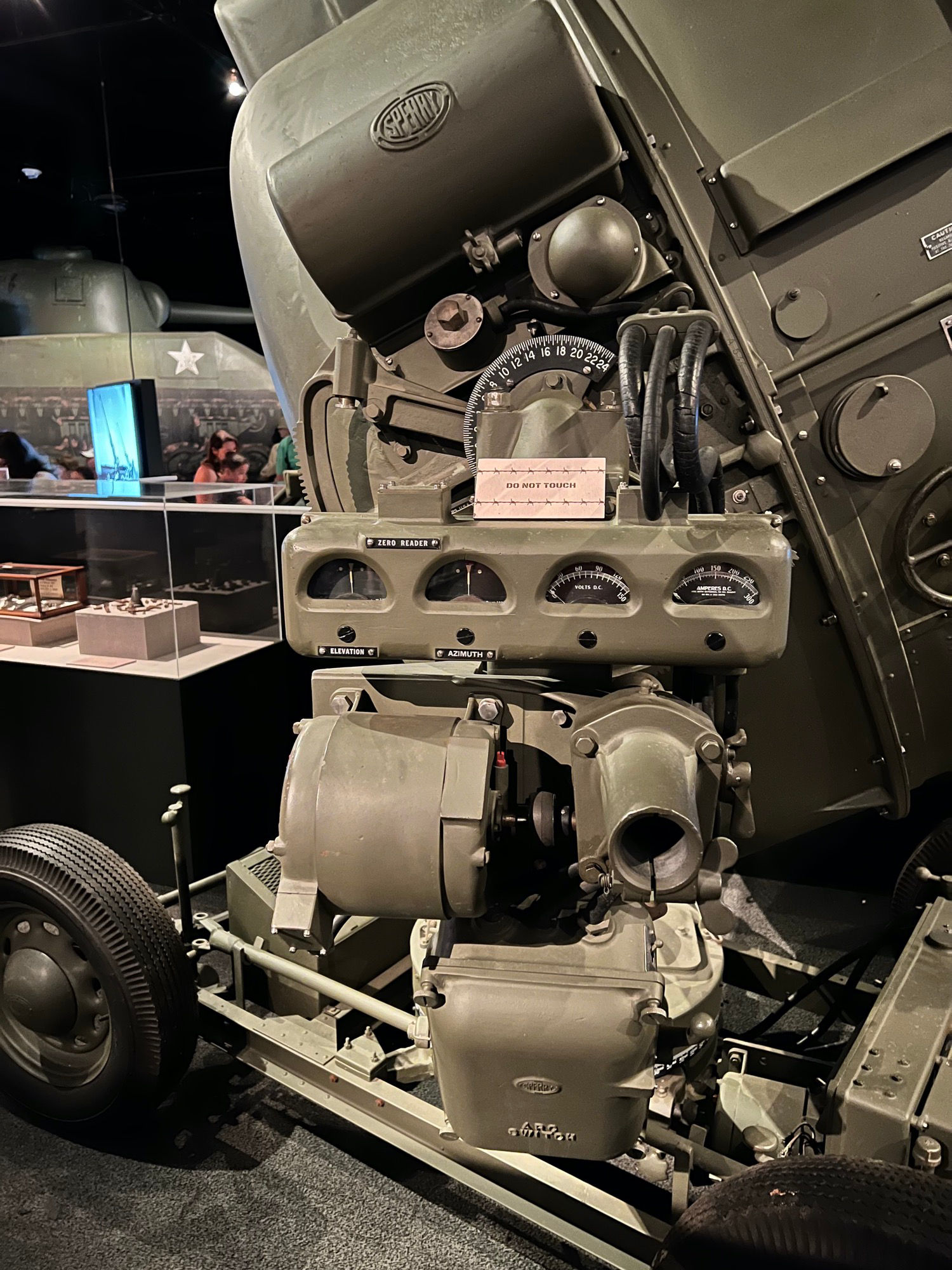They were used during a bombing raid to light up the airplanes and track them so the anti-aircraft guns and night fighters could see the bombers. They were controlled by sound locators and radar. They do not have a light bulb inside. The huge beams of light are created by two carbon rods, one positive and one negative, arcing within the focal point of a 60-inch parabolic mirror. The five-foot wide beam projects for 5.6 miles and can be seen for 28-35 miles.

Light up the Night with a Candlepower Flashlight
The first 60-inch searchlight was made by General Electric in 1893. Searchlights were produced for military use from 1932 to 1944 at a cost of $60,000 each (approximately $967,000-1.2 million today).
They do not have a light bulb inside. The huge beams of light are created by two carbon rods, one positive and one negative, arcing within the focal point of a 60-inch parabolic mirror. As the rods burn, they are automatically fed into the light. The rods last approximately 2 hours and then are replaced. The flame that is visible during the light's operation is not actually the source of the light, rather, it is the result of the electricity arcing between the two rods. The five-foot wide beam projects for 5.6 miles and can be seen for 28-35 miles. It was powered by a gasoline-fueled Sperry Searchlight Generator. Together, a light and a generator weighed over 6,000 pounds.
This 1941 Sperry searchlight had been sitting in a field for over 10 years and was restored by the crew at Fort MacArthur over a two year period.










WIKIPEDIASearchlight (or Spotlight)
An apparatus that combines an extremely bright source (traditionally a carbon arc lamp) with a mirrored parabolic reflector to project a powerful beam of light of approximately parallel rays in a particular direction. It is usually constructed so that it can be swiveled about.Searchlights were used extensively in defense against nighttime bomber raids during the Second World War. Controlled by sound locators and radars, searchlights could track bombers, indicating targets to anti-aircraft guns and night fighters and dazzling crews.

Searchlights were occasionally used tactically in ground battles. One notable occasion was the Red Army use of searchlights during the Battle of the Seelow Heights in April 1945. 143 searchlights were directed at the German defense force, with the aim of temporarily blinding them during a Soviet offensive, begun with the largest artillery bombardment the world had ever seen until that point. However, the morning fog diffused the light and silhouetted the attacking Soviet forces, making them clearly visible to the Germans. The Soviets suffered heavy losses as a result and were forced to delay their invasion of the city.
Second World War-era searchlights include models manufactured by General Electric and by the Sperry Company. These were mostly of 60 inch diameter with rhodium plated parabolic mirror, reflecting a carbon arc discharge. Peak output was 800,000,000 candela. It was powered by a 15 kW generator and had an effective beam visibility of 28 to 35 miles in clear low humidity.
The searchlight also found a niche for use by night fighters and anti-submarine warfare aircraft. The Turbinlite was a powerful searchlight mounted in the nose of an RAF Douglas Boston light bomber, converted into a night fighter to shoot down Luftwaffe night bombers. The aircraft would be directed in the general direction of the enemy by ground-based or metre-wave airborne radar, and the pilot would then switch on the Turbinlite, illuminating the enemy aircraft, which would then be shot down by accompanying RAF day fighters such as the Hawker Hurricane. This never proved very successful, as the light made the emitting aircraft a very big target for rear gunners, who would simply have to shoot into the light and be guaranteed to hit something eventually.
During the Battle of the North Atlantic, RAF aircraft such as the Vickers Wellington were assigned to patrol for surfaced German U-boats at night, when they would be on the surface, charging their batteries. A large searchlight called a Leigh light was suspended from the bottom of the wing or fuselage, and would be used to illuminate the surfaced U-boat while it was being attacked with bombs and depth charges. The Leigh light was somewhat more successful than the Turbinlite, but in both cases the development of centimeter-wave radar proved to be the far more effective answer.







